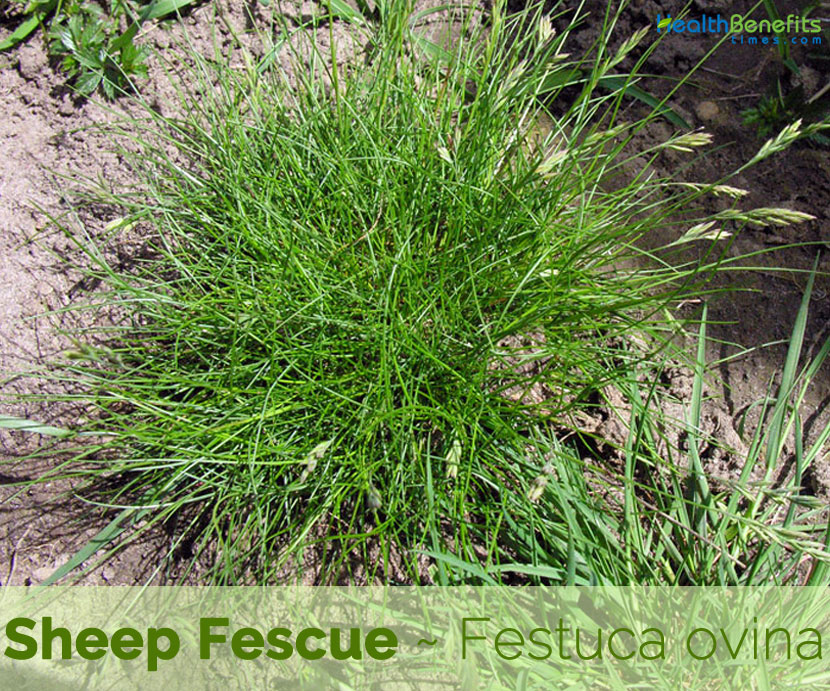| Sheep Fescue Quick Facts | |
|---|---|
| Name: | Sheep Fescue |
| Scientific Name: | Festuca ovina |
| Origin | Throughout Europe (with the exception of some Mediterranean areas) and eastwards across much of Asia |
| Shapes | Grain short and plump (mussel-shaped), lemma sharply pointed at the top, mostly awnless, but may also be awn-tipped |
Plant Description
Sheep fescue is a low-growing stress tolerant, perennial cool season turf grass that grows about 40 inches. The plant is found growing in mesic open hillsides, meadows, or open woodlands, exposed bench lands, hillsides and ridges, parks, meadows, forestlands, and open ponderosa and lodge pole pine stands, lowland calcareous grasslands, upland heaths, moors, mountain slopes, rock ledges, and sea-cliffs. It often grows on all exposures in a wide variety of soil conditions. It is often found in dry, well-drained, sandy, gravelly, or rocky soils; however is occasionally found on loamy sand soils, and on shallow, dry, gravelly soils. It is sometimes used as a drought-tolerant lawn grass. It has excellent winter hardiness and develops a large root mass making this a long-lived variety. Sheep Fescue differs from hard fescue in that it is shorter (5-10 cm or 2-4 inches), slightly more drought tolerant, and has a blue-green color.
Leaves
Leaves are mainly basal, numerous, and rolled. They are very slender, rough to the touch on the margins, and 2-5 inches long. They are less than half the length of the stem; the stem leaves are few and very short. The sheaths are open, auricles are absent, and the ligule is membranous. The leaves are blue-green-gray in color which helps identify this species from other similar grasses.
Flowers
Panicle is approximately 15 cm long with 1 side branch at the lower nodes. It is initially upright, and then spread horizontally. Spikelets have long pedicels, usually 5–9 florets which flower from May to June. Glumes are rounded at the top; lemmas are ovate, awn-tipped, and often purple. The flowers are hermaphrodite (have both male and female organs) and are normally pollinated by wind.
Fertile flowers are followed by grain short and plump (mussel-shaped), lemma sharply pointed at the top, mostly awnless, but may also be awn-tipped. Pedicel is 0.5-1 mm long (shorter than that of red fescue), widening towards the top and covered in short hairs.
History
Sheep fescue is a cool season perennial grass native to Europe. Within North America, sheep fescue has been planted in open forests and mountain and foothill slopes from Alaska to North Dakota and south to Arizona and New Mexico. It has also been introduced to many locations in eastern North America.
References:
https://www.itis.gov/servlet/SingleRpt/SingleRpt?search_topic=TSN&search_value=40804#null
https://npgsweb.ars-grin.gov/gringlobal/taxonomydetail.aspx?id=16688
https://pfaf.org/user/Plant.aspx?LatinName=Festuca+ovina
https://plants.usda.gov/core/profile?symbol=FEOV
http://www.theplantlist.org/tpl1.1/record/kew-415853
http://www.eu-nomen.eu/portal/taxon.php?GUID=907B7888-8662-4006-83DD-63B759EEA6E3
https://extension.usu.edu/rangeplants/grasses-and-grasslikes/sheep-fescue
https://gd.eppo.int/taxon/FESOV
https://en.wikipedia.org/wiki/Festuca_ovina
Comments
comments
